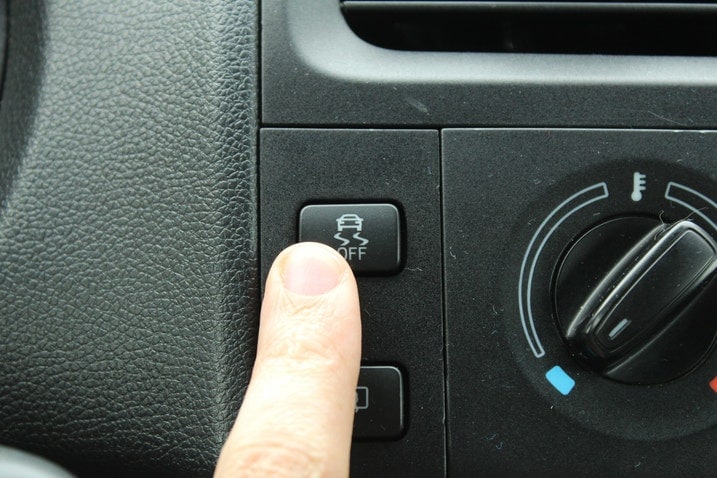Photo by Zmaj88 | iStock
Electronic stability control (ESC) is an advanced safety feature designed to help drivers maintain control of their vehicles during extreme maneuvers or in slippery road conditions. It monitors the vehicle's speed, steering wheel angle and lateral acceleration. When it detects a potential loss of control, it automatically applies brakes to individual wheels and reduces engine power if necessary. This helps prevent the vehicle from skidding.
Importance of ESC in modern vehicles
According to the National Highway Traffic Safety Administration, ESC systems can reduce the risk of fatal single-vehicle crashes and fatal rollovers by about 50%.
Whether due to sharp turns, evasive maneuvers or slippery conditions, losing control of a vehicle can lead to a severe crash. ESC intervenes in these scenarios, helping drivers maintain control and avoid accidents.
ESC benefits any driver lacking the experience or skills to handle emergencies effectively. By automatically correcting the vehicle's path, ESC provides an added layer of safety that can compensate for driver errors. It also enhances the vehicle's overall stability, making it easier to handle under various driving conditions.
How ESC works
ESC operates on a continuous cycle of monitoring:
The sensors feed data to the ESC control unit.
The unit uses the data to determine the risk of losing control.
If it detects a potential issue, the ESC system steps in to adjust the trajectory by selectively applying the brakes to individual wheels for maximum effect, reducing engine power, or preventing excessive wheelspin and further loss of control.
This combination of braking and engine management allows the ESC system to manage the vehicle's stability effectively.
Components of an ESC system
Lateral acceleration sensor
The lateral acceleration sensor measures the side-to-side (lateral) forces acting on the vehicle. These forces occur during cornering or when making sharp turns. This sensor helps the ESC system determine if the vehicle is sliding sideways. In such cases, the ESC can intervene to prevent a potential rollover.
Steering wheel angle sensor
The steering wheel angle sensor monitors the position of the steering wheel. For instance, if the driver turns the steering wheel sharply but the vehicle continues to move straight ahead (understeer), the ESC system recognizes this as a potential loss of control and takes corrective action.
Wheel speed sensor
Wheel speed sensors measure the rotational speed of each wheel. This detects wheelslip and loss of traction. If one or more wheels are spinning faster or slower than expected, the ESC system can adjust braking and engine power to regain control.
Other systems, including antilock braking systems and traction control systems, also use wheel speed sensors.
ESC operation
If a driver loses control of a vehicle, the ESC system springs into action to help the driver regain stability, moving through the following steps:
Detection
Assessment
Intervention
Correction
Detection of loss of control
The system relies on its sensors to detect when the vehicle isn't responding as expected to driver inputs. For example, if the vehicle begins to skid on a slippery road, the lateral acceleration sensor detects the sideways movement. Similarly, the steering wheel angle sensor and wheel speed sensors provide data indicating a potential loss of control.
Next, the system assesses the situation and determines the necessary corrective actions. This rapid response helps prevent accidents.
Targeting braking to individual wheels
This intervention helps restore control. For example, if the vehicle fails to turn as sharply as intended, the ESC system may apply the brakes to the inner rear wheel. This creates a force that helps pivot the vehicle in the desired direction, correcting the understeer. Conversely, if the vehicle turns more sharply than intended, the ESC system may apply the brakes to the outer front wheel, which helps counteract the skid and stabilize the vehicle.
Selective braking allows the system to precisely control the vehicle's dynamics and keep it on track. By intervening only when necessary and targeting specific wheels, ESC provides a subtle yet powerful form of assistance that enhances driver control without being intrusive.
Benefits of ESC
The benefits of ESC are extensive and well-documented. Some of the most significant advantages include:
Reduction in single-vehicle crashes: Many accidents result from skidding, sliding or losing control. By helping drivers maintain control, especially in adverse conditions, ESC intervenes and prevents the vehicle from veering off the road.
Prevention of rollovers: Rollovers are among the most dangerous crashes, often leading to severe injuries or fatalities. ESC helps prevent rollovers by stabilizing the vehicle during sharp turns or evasive maneuvers.
Enhanced traction on slippery roads: ESC has a significant impact when driving on roads covered with ice, snow or rainwater. By detecting and quickly correcting loss of traction, ESC helps maintain stability.
Improved handling and control: ESC makes driving safely under various conditions easier. Whether navigating tight corners or avoiding obstacles, ESC provides a level of control that boosts driver confidence.
Increased safety for all drivers: Experienced and novice drivers alike find the additional layer of protection that compensates for driver errors quite valuable.
